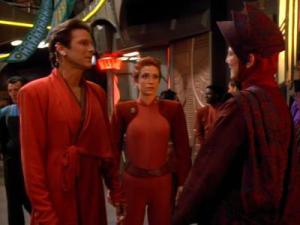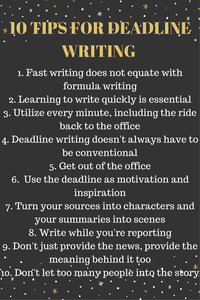
Greta and I crunch out into the driveway, down to the street, and we gaze at a changed world. Each leaf, in the waiting pile, is finely limned, dusted and glazed. They are not what they were yesterday. A cold fog hovers over Sandi and Colleen’s houses, over the Helen Purcell home up on its hill. And the lawns are white, each blade of grass carefully picked out, Crayola greenness muted on this cold, cold morning.
My valiant marigolds have thrown up their petals in defeat. The last seven blooms are choked and crispy. Today, I’ll pull them out, throw them on the leaf pile.
It’s over, the season of outdoor growth.
First frost has come.
*********
The Impala is warming up when we sidle back through the carport, and Mark is bundled into his winter coat. We wave him goodbye. The furnace chugs in the morning house, and I grab my cell phone and go out to take pictures, to try to record the magic the night has wrought on the neighborhood. I try to capture the immensity in my forlorn little shots, the transformation and the message. Because the season turned a corner last night, irrefutable, irrevocable.
First frost brings, of course, the possibility of Indian Summer, which can only happen after temperatures have plummeted. But there is no doubt now: winter surges toward us.

*********
In the dining room, I stare out the clear, insulated glass in the bay window. I remember waking to lacy, intricate tracery on my bedroom windows long ago. It was art that grew and moved, climbing upward, rolling forward. I could make it stop, make it disappear, with the heat of my fingers.
“Jack Frost has been here,” my mother said. I pictured a fox-faced, blue-tinged boy ordering frothy designs to appear on the cold glass of my windows, and I shivered. That impish sprite felt like no friend of mine.
But now I find we are fascinated, as a culture, by Jack Frost. I look him up on Wikipedia and find that every culture that has winter also has some sort of Jack Frost figure. He may be old (Grandfather Frost in Russia) or female (Mother Holle in Germany). The Hindus believed that a giant from the arctic regions ruled the highest, permanently snow-covered areas of the Hindu Kush; this giant waited, malevolently, for all passersby, and one had to be canny and fast to elude him.
The Jack I know comes to us from England; he may have traveled there with his Anglo-Saxon ancestors or on a Viking ship.
He has appeared in books and poems and films and television–impish, sly, a little destructive. He slows things down. He stops them, mid-growth. He makes things end. He seduces us with the power of his pretty art—art that draws one closer to explore the detail, to gasp a bit over the never-ending variety of pattern. And all the while we are drawn further and further into the cold.
Wikipedia notes that Elizabeth Bishop mentions Jack Frost in a poem, “First Death in Nova Scotia,” and I pull my Complete Poems from the shelf and look it up. The poem tells the story of the death of a cousin, little Arthur, who is laid out in the narrator’s childhood living room. Her mother gives the girl a sprig of lily of the valley and bids her put it into the baby’s hand.
Jack Frost had started to paint him [Bishop writes]
the way he always painted
the Maple Leaf (Forever).
He had just begun on his hair,
a few red strokes, and then
Jack Frost had dropped the brush
and left him white, forever.
Bishop’s work makes me think of another Frost, of Robert Frost; the anthology of his collected works sat on my parents’ bookshelf. It was a gift, I think, from my brother Dennis, who focused on the poet in his undergrad days. Dennis came of age as John F. Kennedy was sworn in, with Frost as his accessible, inaugural poet, worn and craggy voice of a hopeful people.
We read in school, of course, about the two roads diverging; I fixated on that patient little horse. And I explored the book of poems and was caught by “Out, Out—” Another child dead, this one from the leaping, malignant, laughing saw (it shared a little of Jack Frost’s horrible mischievousness, I thought–a blank-walled lack of care about who might be hurt). The suddenness, the horror, the raw, untempered grief…and then the return of the family to the things that every day must bring. The boy, buried and gone.
I went back to that poem time and again, worrying it like an aching loose tooth, feeling the frost.
************
Now, wondering about the history of the word itself, I go to dictionary.com and find that ‘frost’ has not changed much over hundreds and thousands of years. Hard, cold, crystallized, the word fell through time, from the Old Norse, the Old High German, the Old Saxon: a shared word, it seems. It tumbled untouched, hard and brittle, through the Middle Ages, and landed in this modern age, self-contained, essential. Frost, akin to freeze. It means what it means, now as it did then.
Frost is “a degree or a state of coldness sufficient to cause the freezing of water.” It is the forming of tiny needles of ice in the night, “when they have cooled,” the website says, “by radiation below the dew point.” This is called hoarfrost, a lovely, harsh romantic word, evoking flint-eyed battling giants in my mind.
We are in the time of the hoar frost, I think, and the days begin to wear a kind of frozen splendor.
*********
There are many other ways the word ‘frost’ can be used. Relations, once warm, can become frosty. Enthusiastic planners can find their proposals stopped by frost. Plays and movies, songs and stories, may meet a frosty reception. Frostiness is not what we want to encounter at, say, a job interview.
We frost cakes. We frost glass. We frost people, as in, He was so nasty that the whole staff was frosted at him. We frost our hair.
My hair is frosted, not by design, but by nature, a consequence of retired life: I decided to stop coloring when I decided to stop working in higher ed. I waited, tentative and nervous, to see what would emerge. The last time I’d seen my real hair, there were occasional sproinging grays that stood straight up, like periscopes sent skyward by a spying scalp. A random pure white strand would wiggle out to breathe, brittle and tough. But most of it , seven years ago, was my own reddish color.
First I decided to add blonde highlights, Then, I said, let’s make them all the same color–MY color.
Now I want to know, in these latter days, what ‘my color,’ means.
We cut my hair as short as it’s ever been, and then wait. Each month, Don, the master hair cutter, trims off the colored ends. They fall like brassy auburn leaves to his immaculate shining floor; he rakes them up and tosses them away.
By November, he says, you should be completely YOU.
My hair frost coincides with the hoar frost. That’s something I need to ponder.
*************
The growing season is over, but that does not eliminate the chance of growth.. In fact, I think, with the tumult and lavish energy expended, now is the time to employ the fruits. The frost has come, the crops are bundled into their silos, the potatoes are in their cellar bins, and the tomatoes glow in rows and rows of Mason jars. Now we think about what we can make from those harvested treasures.
Growing time over, it’s time to create.
Time, too, to celebrate: to gather in, to roast gifts of field and flock and give thanks for another year’s bounty. Time, maybe, to mark down the costs the year brought us, and render their meaning into mindfulness. The frost has come, and we are called to be grateful.
The time of frost deepens into winter, and our lights spring up as the darkness enfolds. We become makers: cooking and knitting, painting and rearranging. Labor of the growing time done, we can bring order and thought and care to the living of our daily lives. We can rest, and we can prepare for the swing back into spring.
*************
First frost–it seems, at first, like a mischievous, ill-meaning, taunting time, but as I explore more deeply, I find comfort and possibility. There is beauty here, and there is potential. There is the chance to bundle up against the chill, to walk on crisp, leathery leaves in the small remaining sunlit hours…to wave at neighbors, to savor the sight of pumpkins and corn stalks. There are the evening hours that open up to literature and films and the writing of letters. There are naps in front of a crackling fire, wrapped in a warm afghan. There is the impulse to create.
Every season has its depth and its meaning and its purpose. I settle, as if drawn by Jack Frost’s fern-like artwork, deeper into the time of frost. I hunker down, tentative and a little fearful, but I see more clearly now: this time can be so good.

Advertisements Share this:





